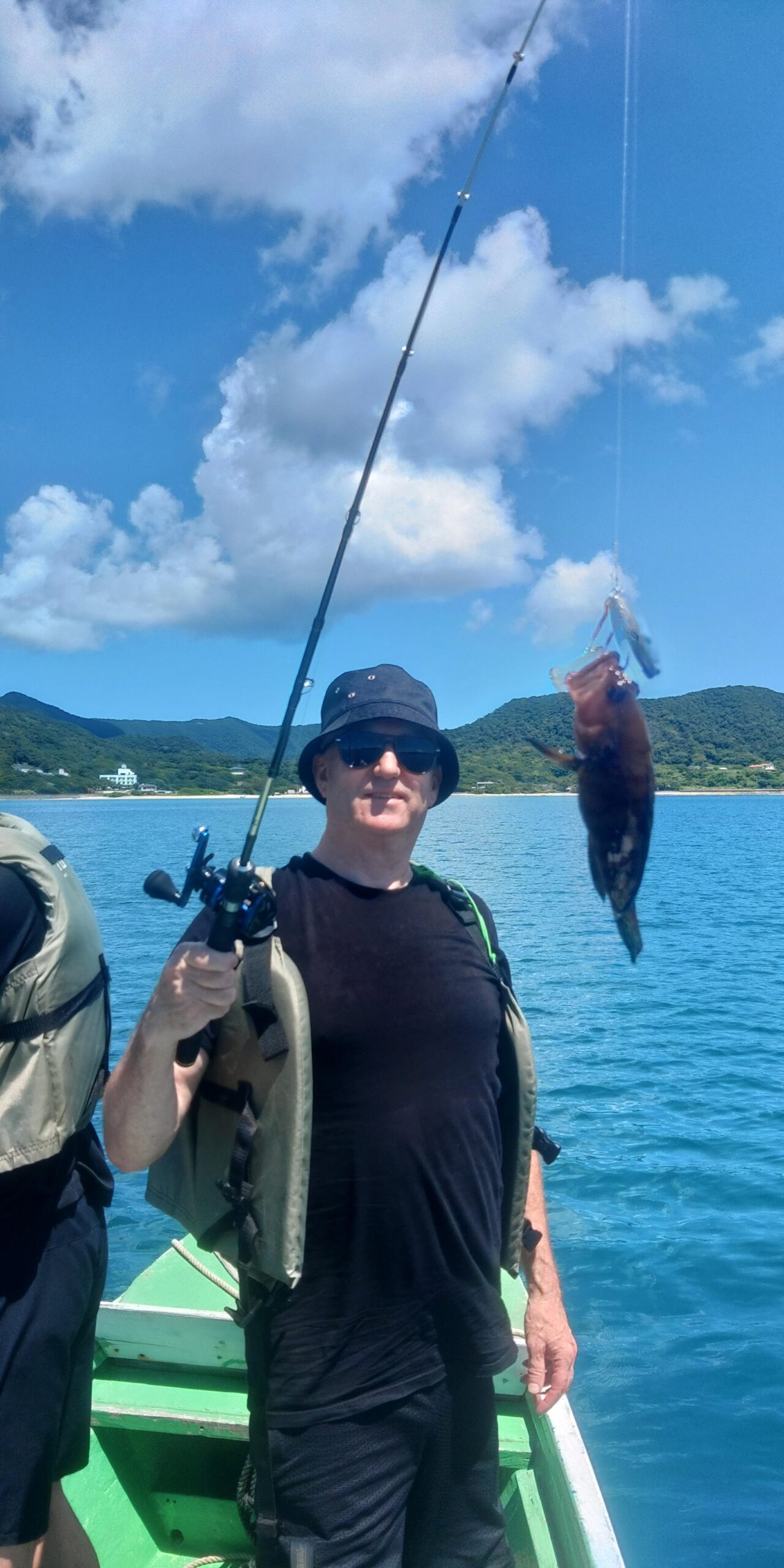- Light Jigging from a Boat: A Beginner’s Guide
- Preparation Before Boarding: Light and Free Like a Kestrel
- Necessary Gear:
- Clothing:
- Setting Sail: Heading to the Fish Party Venue
- Boat Etiquette:
- Basic Light Jigging Techniques: Make Your Jig Dance
- The Moment of Hit: Begin the Battle with the Fish!
- Catch and Release: Show Your Gratitude to the Fish
- Conclusion: Embrace the Joy of Light Jigging
- History and Evolution of Sabani
Light Jigging from a Boat: A Beginner’s Guide

Hello, and welcome to the world of fishing! Today, we’re going to talk about “light jigging,” a type of fishing that even beginners can enjoy. In a nutshell, light jigging is “easy and fun jigging.” Instead of using heavy jigs, you use lighter tackle to target fish. When you head out to the open sea on a boat, you’ll feel like the fish are calling out, “Come this way!” Ready to get started? Let’s explore the charm and basics of light jigging with a humorous touch!
Preparation Before Boarding: Light and Free Like a Kestrel
- Preparation Before Boarding: Light and Free Like a Kestrel
First, let’s prepare. The appeal of light jigging lies in its simplicity. You don’t need to carry heavy gear. Like a kestrel soaring lightly through the sky, you should prepare lightly as well.
Necessary Gear:
Necessary Gear:
- Rod and Reel: A lightweight rod and spinning reel for light jigging. A length of 6 to 7 feet is recommended.
- Line: PE line of 0.8 to 1.5 gauge. Prepare a fluorocarbon leader of 10 to 20 pounds.
- Jigs: Metal jigs (10g to 60g). Choose colors and shapes that make the fish think, “Yum!”
- Hooks: Attach assist hooks to your jig. Aim for the moment when the fish thinks, “Bon appétit!”
Clothing:
Clothing:
- Hat and Sunglasses: Sun protection. Protect yourself as well as the fish.
- Life Jacket: Safety first, but don’t forget style.
- Waterproof Jacket: Be ready for sudden rain. Choose a stylish design to keep your fishing style on point.
Setting Sail: Heading to the Fish Party Venue
- Setting Sail: Heading to the Fish Party Venue
Once you board the boat, it’s time to set off. Get used to the boat’s motion, practicing your balance like a ballerina.
Boat Etiquette:
Boat Etiquette:
- Follow the Captain’s Instructions: Safety first. The captain’s word is law.
- Communicate with Fellow Anglers: Greetings and smiles are key. Build bonds with your fishing buddies.
Basic Light Jigging Techniques: Make Your Jig Dance
- Basic Light Jigging Techniques: Make Your Jig Dance
The core of light jigging is making your jig “dance” to attract the fish. Move the jig like a dancer, calling out to the fish, “Over here!”
Step 1: Casting
Cast from the side of the boat towards the sea. No need for long distances; dropping the jig close works fine. Fish are nearby.
Step 2: Falling
Wait for the jig to sink to the seabed. The jig flutters down like a falling leaf, piquing the fish’s curiosity.
Step 3: Jerking
Once the jig hits the seabed, start reeling in while moving the rod up and down. Show the fish that the jig is “dancing.”
Step 4: Retrieving
Reel in the jig at a steady pace, making it look like it’s swimming. The fish will think, “I can’t let this one get away!” and give chase.
The Moment of Hit: Begin the Battle with the Fish!
- The Moment of Hit: Begin the Battle with the Fish!
The highlight is when a fish bites the jig. Enjoy the thrill as the rod bends and you engage in a battle with the fish.
Feeling the Hit:
- Light Pull: It might be a small fish. Stay calm and handle it gently.
- Strong Pull: This could be a big one! Keep the rod up and be careful not to break the line.
Battle Tips:
- Drag Adjustment: Set the drag properly to avoid breaking the line when the fish runs.
- Pumping: Move the rod up and down while reeling in. Match the fish’s movements and avoid forcing it.
Catch and Release: Show Your Gratitude to the Fish
- Catch and Release: Show Your Gratitude to the Fish
After catching a fish, take a photo to remember the moment. If the fish is small or not needed, gently release it back into the water. Always appreciate the fish.
- Onboard Entertainment: Enjoy Time with Your Friends
Between fishing, enjoy chatting with friends and having snacks. Make the most of your time at sea.
Onboard Snacks:
- Sandwiches: Easy to eat while enjoying the view.
- Rice Balls: A Japanese tradition, satisfying and heartwarming.
- Cold Drinks: Stay hydrated. Keep cool drinks in a cooler.
Sharing Laughs:
- Fishing Mishaps: Laugh off the mistakes. Reset your mind for the next success.
- Sea Mysteries: Share fun sea trivia. There’s always something new to learn about the ocean.
Conclusion: Embrace the Joy of Light Jigging
Conclusion: Embrace the Joy of Light Jigging
Light jigging is an exciting and accessible form of extreme fishing for beginners. With lightweight tackle and simple techniques, you can enjoy thrilling battles with fish. From preparation to execution and the joy of sharing time with friends, light jigging offers a fulfilling day at sea.
So, why not challenge yourself with light jigging next weekend? The wind and waves are waiting for you. Let the adventure begin!
Sabani as a Practical Engine-Powered Boat
The traditional Amami boat “Sabani” has been cherished by fishermen for its excellent design and durability. Originally designed as a sailing vessel, the Sabani has become even more practical with the addition of an engine. Let’s explore the appeal and practicality of the engine-powered Sabani.
History and Evolution of Sabani
History and Evolution of Sabani
Sabani is a traditional boat used in the Ryukyu and Amami regions for centuries, with origins dating back hundreds of years. Initially powered by oars and sails, it has evolved over time, and now, with the addition of engines, it is well-suited for modern fishing. Engine-powered Sabani enables efficient and economical fishing operations.
Advantages of Engine-Powered Sabani
Advantages of Engine-Powered Sabani
- Maneuverability and Stability
- With an engine, Sabani is less affected by wind and currents, allowing for stable navigation. This enables fishermen to quickly reach their targeted fishing grounds.
- Efficient Fishing
- Compared to the days of rowing and sailing, engine-powered Sabani can travel much faster. This allows fishermen to spend more time fishing, thereby increasing their catch.
- Versatility
- Engine-powered Sabani is used not only for fishing but also for tourism and transportation. In the tourism industry, the combination of traditional design and modern convenience offers tourists a unique experience.
- Ease of Maintenance
- Wooden Sabani can have a long lifespan with proper maintenance. Regular inspection and maintenance of the engine ensure stable performance over an extended period.
Practical Uses of Engine-Powered Sabani
Practical Uses of Engine-Powered Sabani
- Coastal Fishing
- Engine-powered Sabani is particularly effective in coastal fishing. It can navigate safely in rocky and shallow areas, allowing for efficient catching of various types of fish.
- Tourism Tours
- Many tourists enjoy cruises on engine-powered Sabani. Experiencing Amami’s beautiful sea aboard a traditional boat offers a special experience unique to this region.
- Inter-Island Transportation
- Sabani is also used for transporting goods between regions. It is an indispensable means of transport, especially between the islands of Amami.
Conclusion
Conclusion
Engine-powered Sabani is a practical boat that merges tradition with modern technology. Its versatility in fishing, tourism, and transportation significantly impacts the local economy and culture. Rediscover the charm of Sabani along with the scenic beauty of Amami.

